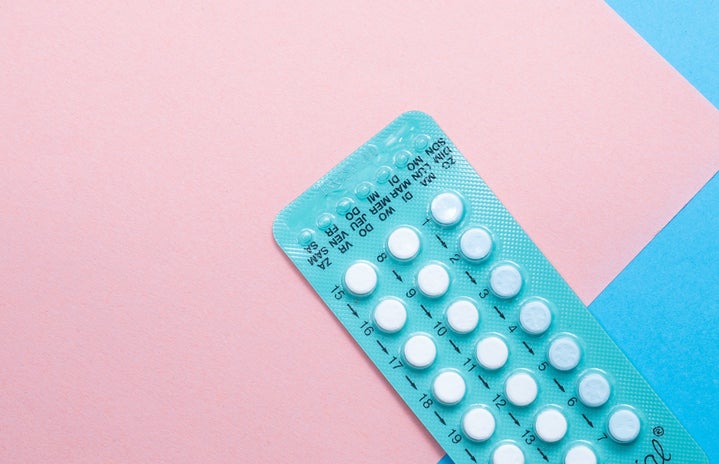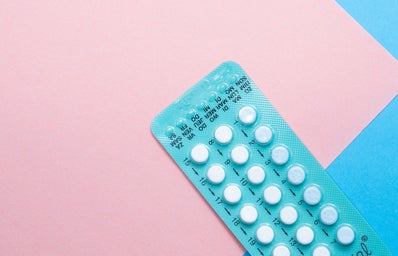From treating anemia to PCOS, the pill is far more essential to all women’s health than people realize
The birth control pill, commonly referred to as “the pill,” is one of the most-used methods of contraception. It is designed to be a daily pill and uses the female hormones estrogen and progestin to regulate the menstrual cycle and prevent pregnancy. Although most forms of the pill contain both estrogen and progestin, there are some forms that only contain progestin, which can be better for women with high blood pressure, a history of blood clots or other conditions negatively affected by estrogen. According to Planned Parenthood, the pill is 93% effective at preventing conception, while other sources claim that the percentage is even higher.
What so many people don’t realize, however, is that the pill is prescribed for more reasons than just contraception. Due to its ability to regulate hormones, the pill is the first treatment for many hormone-linked conditions such as Polycystic Ovarian Syndrome, Premenstrual Dysphoric Disorder, chronic acne, alopecia and so many more. The pill is also prescribed to many women with anemia to lighten or stop their period and prevent them from losing sorely needed iron. In fact, according to a study done by Dr. Rachel Jones of the Guttmacher Institute, 58% of women on the pill take it “for purposes other than pregnancy prevention.” That’s more than half. The study also found that 14% of users, which is over 1.5 million women, take the pill solely for non-contraceptive purposes, while 9% of users have never even had sex.
In an interview with Tiarra Holmes, a University of Florida sophomore majoring in computer science, Holmes described how she was recently put on birth control to help treat her hidradenitis suppurativa. HS is a chronic inflammatory skin condition that causes painful sores to develop around areas where skin rubs together such as a person’s armpits, buttocks and inner thighs. Holmes was recently diagnosed in the spring of this year after she started developing painful abscesses under her arms. Once she was officially diagnosed, her doctor immediately put her on the pill to help regulate her hormones and hopefully alleviate her symptoms; HS is strongly linked to hormone imbalances in women. For Holmes, starting the pill was “the best thing [she’s] done” because she hasn’t had “a serious flare-up since starting birth control,” which she feels incredibly thankful for due to how painful they are. Besides the improvement in her symptoms, Holmes also revealed that she’s stopped having period cramps ever since starting the pill.
My Experience
I first started taking birth control at the beginning of my senior year of high school after being diagnosed with Polycystic Ovarian Syndrome, an experience that I talk about at length in my article “How My PCOS Diagnosis Altered My Past, Present & Future.” Like Holmes, I started taking the pill for purely non-contraceptive purposes and it completely changed my quality of life. Before being prescribed the pill, I had ended up in the ER multiple times in completely debilitating pain. I’m now two and a half years into taking the pill, and I haven’t had another episode since starting the pill.
Besides preventing pain, I also noticed that the pill caused a huge shift in my mood. Ever since hitting puberty, I had always been the girl with horrible mood swings that would come and go out of nowhere. A few months after starting birth control, however, my mood swings became far less frequent and less severe. I finally felt emotionally stable, which was something I hadn’t felt in years.
Negative Side Effects of The Pill
While all the examples I’ve presented so far have been positive, I want to make it clear that the pill can have negative side effects. As a matter of fact, the side effects and warnings sheet that comes with my pill measures 19×11 inches, is written in extremely small font and is front and back. It’s also on the smaller side compared to other brands. According to this sheet, common side effects include “headache, vaginal infections, nausea, menstrual cramps, breast tenderness, mood changes, acne and weight gain.” It goes on to list possible serious side effects such as liver problems, high blood pressure, gallbladder problems and blood clots. So, while the pill does help many women live healthier, safer and more liberated lives, it is not for everyone as it can cause serious side effects in some women.
Threats to Birth Control Access
While the US Supreme Court officially legalized the pill on June 7, 1965, women’s right to birth control is currently being threatened. After helping overturn Roe versus Wade this past June, Justice Clarence Thomas publicly declared that “we should reconsider” previous rulings on contraception: a statement that amplified the fear in the hearts of women across the country. Additionally, as the National Women’s Law Center discusses in their article “Don’t Be Fooled: Birth Control is Already At Risk,” many lawmakers have been “purposely conflating birth control and abortion” in their legislation to limit access to contraceptives.
Imposing restrictions on access to birth control would not only lead to a huge uptick in unwanted pregnancies, teen pregnancies and unsafe abortions, but as discussed in this article, it would also prevent the women who use the pill for non-contraceptive purposes from accessing the treatment they need.

